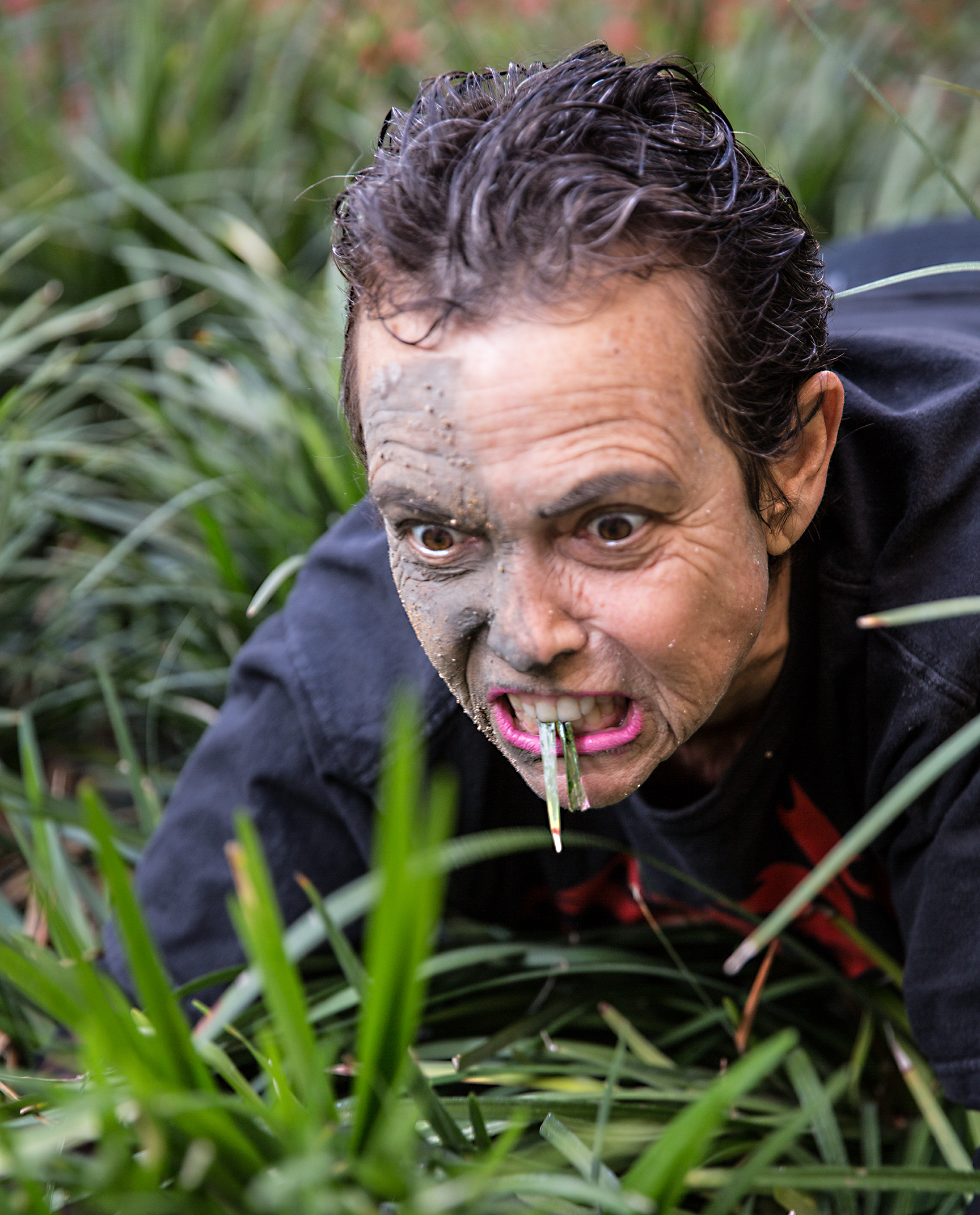
Adam’s first wife from Jewish folklore. Lilith was made from the same clay as Adam, unlike Eve, his second wife, who was made from Adam’s rib. According to 13th-century writings of Rabbi Isaac ben Jacob ha-Cohen, Lilith left Adam after he refused to acknowledge her equality, to make her subservient to him. Lilith left the Garden of Eden and coupled with an archangel and refused to return to Adam. Her self-liberation and iconic defiance has made Lilith a feminist icon.
"I chose Lilith as she symbolizes to me a liberated version of Eve, one that is equal to Adam"-Rachel Finkelstein
Rachel Finkelstein is a multidisciplinary, lesbian, feminist artist. She is the co-founder of Circles, the first women’s film distribution group in the United Kingdom. Her work has been widely shown in Europe and Israel. More recently, in 2012 she was part of the organizing and producing team for Suzanne Lacy’s, “Three Weeks in January,” which was part of the Pacific Standard Time Festival. She is also a member of Craftswoman House and The Association of Hysteric Curators.

(2285-2250 BCE). Enheduanna was the daughter of King Sargon of Akkad and the high priestess of Inanna, goddess of the morning star. Enheduanna was the first author of a signed text in any language and the inventor of the first person form in writing. Often thought of as the Shakespeare of the ancient world over 50 tablets of her poetry still exist today. Her poems were copied and kept at temple sites all over Sumeria and Akkadia unifying temple rituals throughout the ancient state. As a priestess she was responsible for rituals that would both lead troops into battle, and couples to copulation. Enheduanna’s sacred verse style pre-dated the verse form of other ancient texts such as the Old Testament of the Bible by hundreds of years. Her poetry is direct and invokes the power of the Goddess Inanna’s mutable power as the goddess of sex, transgenderism and war.
“ Of course the first poetry was written by a woman, women were the first storytellers, the first entertainers and the first artists in the cave, it's only logical the first great poet would be one of us.” -Mary Anna Pomonis
Mary Anna Pomonis is an artist, writer and educator living in Los Angeles. Pomonis' artwork incorporates performance, painting, installation and social practice art. She is the founding member of the Association of Hysteric Curators, a women's collective focused on promoting feminist issues. Pomonis' project Resurrecting Matilda with collaborator Allison Stewart, was most recently featured at CB-1 guest gallery and in 2017 is slated to travel to the Brand Library in Glendale, CA. She is currently teaching at Cal State Long Beach and is the co-editor of www.radicalactions.com with CSUSB professor of Visual Studies, Annie Buckley.
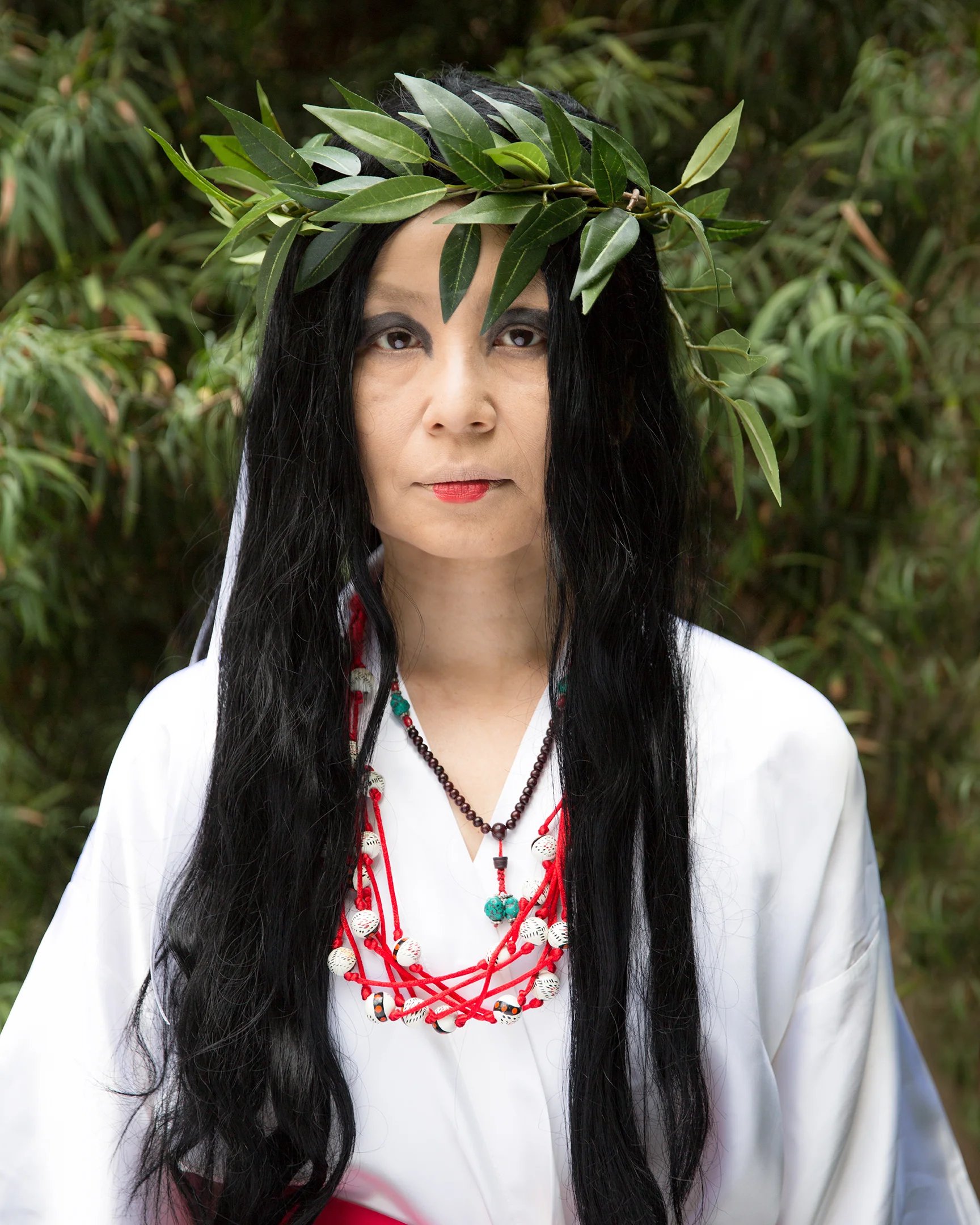
Michiko Yao as Himiko the shaman queen of ancient Japan, (238 AD). She came to power as a peacemaker ending an 80 year war. In ancient Chinese texts her rise to power is attributed to her gender. The previous male ruler in ancient War had led the country into the turmoil of ongoing war so the decision was made to have a woman as leader. The 3rd century Chinese book, “Records of War” details her diplomatic correspondences and shamanistic beliefs. Her reign was peaceful and she was known not only for her use of magic but also for her primarily female attendants, Himiko never married.
“I am interested in Himiko because she represents peace and people chose her because they were sick of wars created by male rulers.”-Michiko Yao
Michiko Yao is a multimedia artist whose work exposes Japanese social stereotypes in both Eastern and Western cultures and confronts the boundaries of socio-culturally constructed ideas of gender, race, and sexuality and their relation to power. Her work is currently installed in the METRO station for the Metro Photographic Lightbox project. Yao is a recipient of 2012 James Irvine Foundation’s Visions from the New California Award.
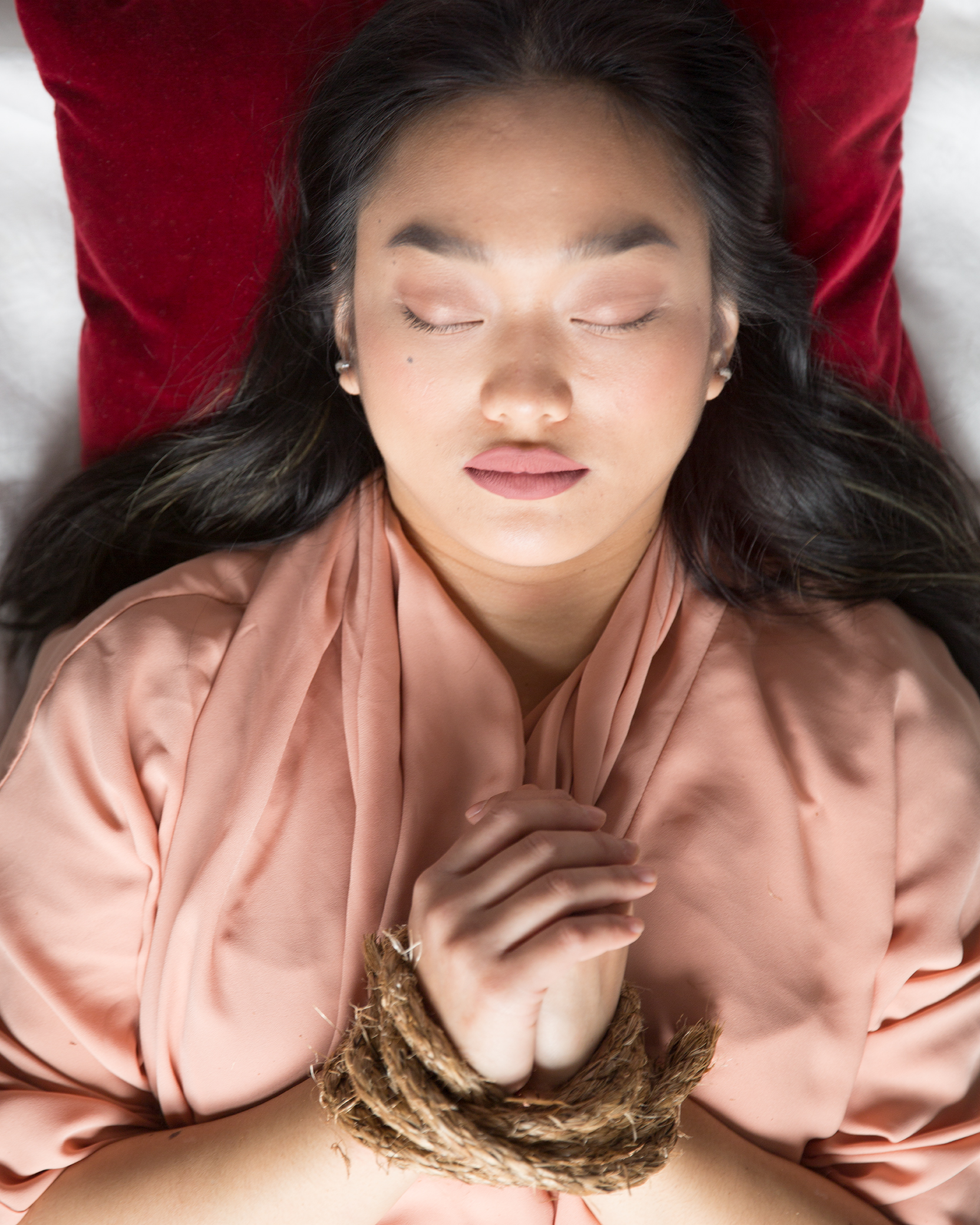
Flores de Mayo is a festival held in the Philippines. Reyna Sentenciada, Queen Convicted, is a character paraded in the streets during the Flores de Mayo parade, her hands bound by a rope. She stands for the persecuted Christians of ancient Rome and is often accompanied by two men depicted as Roman soldiers.
“I chose to portray Reyna Sentenciada because the depiction of her and other female figures in Catholic biblical history and culture frightens me. In her story, her purpose begins and ends only in her sacrifice of her life, innocence, and freedom. As a little girl, Catholicism showed me that important "good" women are martyrs. They are only vehicles for other lives to exist. Thinking about it now, it horrifies me that her narrative parallels the many socially, economically, politically and culturally constructed injustices in many victims of rape and sexual harassment.”
-Christine Dianne Guiyangco
Christine Dianne Guiyangco was born in Philippines in 1992 and moved to United States in 2001. She actively works in a range of fields including performance, painting, writing, installation, video, and sculpture. Her art practice is motivated by identity politics, feminist narratives, institutional frameworks, colonialism, social media, and the aftermath of art production.
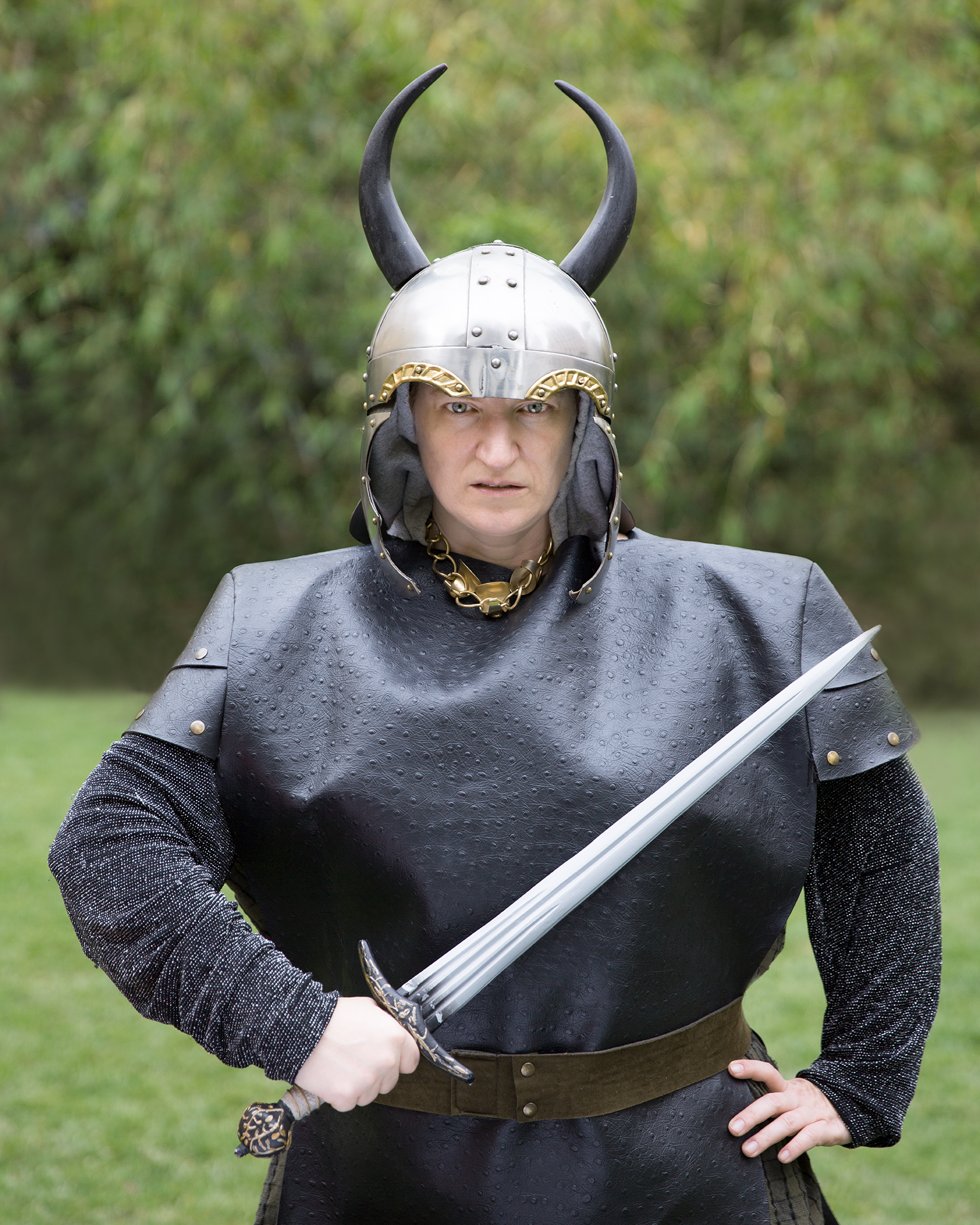
Born during the Viking invasion of England as the eldest daughter of Alfred the Great, king of Wessex. Aethelflaed watched her father push the Vikings out of major English territories. She was similarly noted as a scholar and woman of military tactical skill. Aethelflaed was called lady of Mercy after she was married to Æthelred, Lord of the Mercians. In (911 A.D.) shortly before her husband’s death she took over as ruler and leader of the Mercian army. Aethelflaed ruled the Anglo-Saxon empire of Mercia from (911-918 AD). During her rule she led troops successfully against the Vikings. Among her tactical innovations was a ploy to draw the Viking enemy into traps. Her army would lure invaders into enclosed areas where her hidden army was waiting. Her military successes directly led to kingship of her brother Edward the Elder. She was noted for her military and economic genius building a series of fortresses in order to stay off invasion and helping her brother develop a unifying coinage that later helped strengthen the Anglo-Saxon national identity.
“I was so blown away to learn about this remarkable Anglo-Saxon woman who was a warrior, a wife, and a mother. As an anomaly of her time, she deserves a place in the history books!”-Kari Vargas
Kari Vargas is a high school English teacher. She has a great passion for Anglo-Saxon literature and art. She lives in the Los Angeles area with her daughter.
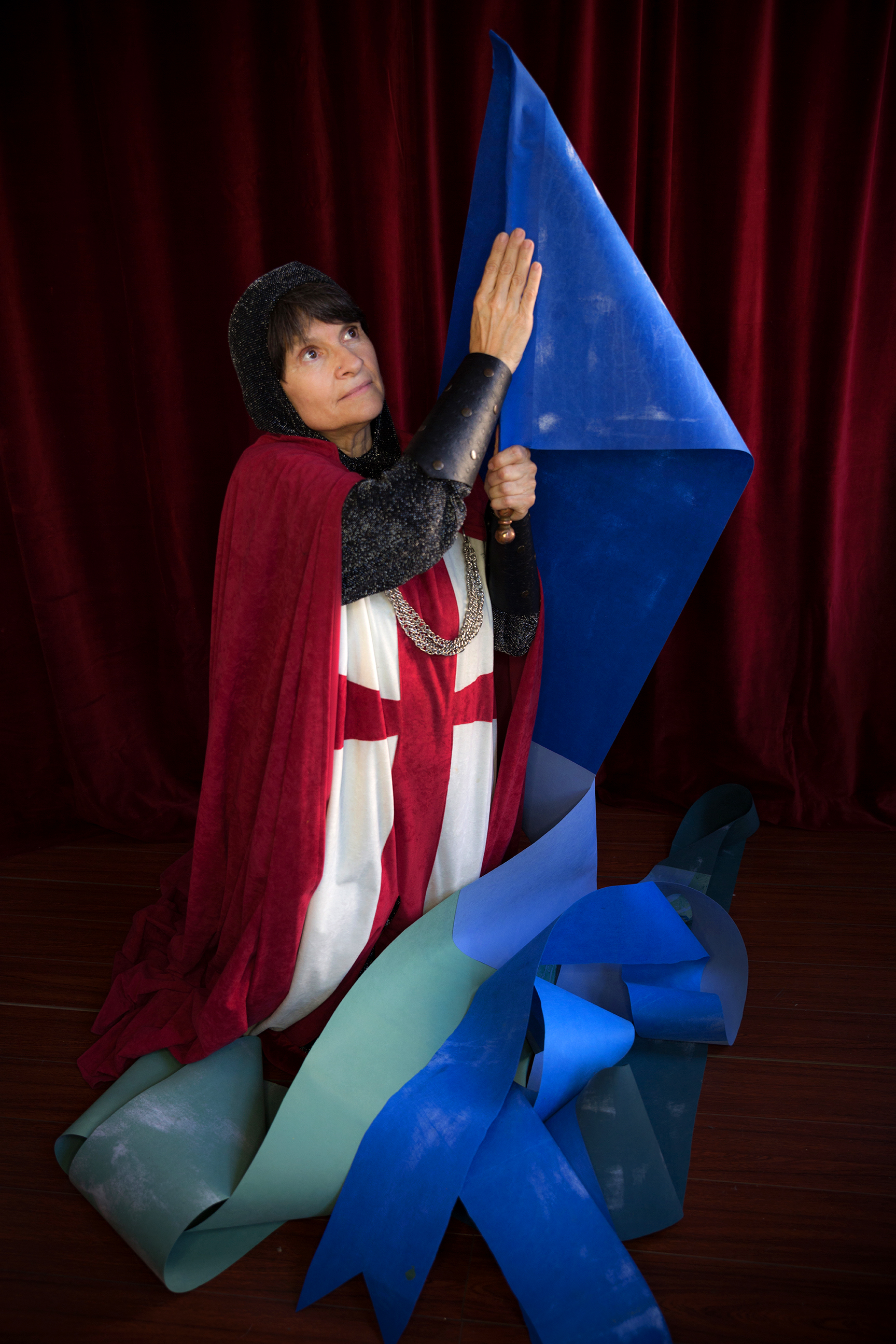
Kim Abeles as Joan of Arc, (1412-1430) also known as the Maid of Orléans in medieval France was a young peasant woman who had visions that God had chosen her to lead France to victory in its war with England. Joan convinced the french prince Charles of Valois to allow her to lead a French army to the besieged city of Orléans. Though she was a commoner and a teenager, Joan of Arc convinced the French nobility to let her fight for French freedom and lead the French into battle. The victory at Orléans made Joan into a popular French symbol of religion and sainthood. Joan was eventually captured by Anglo-Burgundian forces, tried for witchcraft and burned at the stake. Joan’s famous battle dress as a man and religious devotion has made her an enduring symbol of French unity as well as a symbol of gender fluidity and courage.
“The essence of Joan of Arc is her unwavering faith. Writers and filmmakers are drawn to her story because men followed her into battle, and we are startled at this anomaly within endless centuries of misogyny. And beyond this marvel, her story is a more complex portrayal of how resolute we can be in our lives. She is a projection of our potential that normally frightens us. The power is in her undeterred faith, the pure force of infinite vision, and a belief so potent to move the masses. At Joan’s core is the steadfast clarity of the creative spirit in a world distracted by its parts.”- Kim Abeles
Kim Abeles' art crosses disciplines and media to explore biography, geography and environment. She has created projects with the California Science Center, air pollution control agencies, health clinics and mental health departments, and natural history museums. Abeles received the 2013 Guggenheim Memorial Fellowship, and fellowships from J. Paul Getty Trust Fund for the Visual Arts, California Community Foundation, and Pollack-Krasner Foundation. Her journals, books, and process documents are archived at the Center for Art + Environment, Nevada Museum of Art.
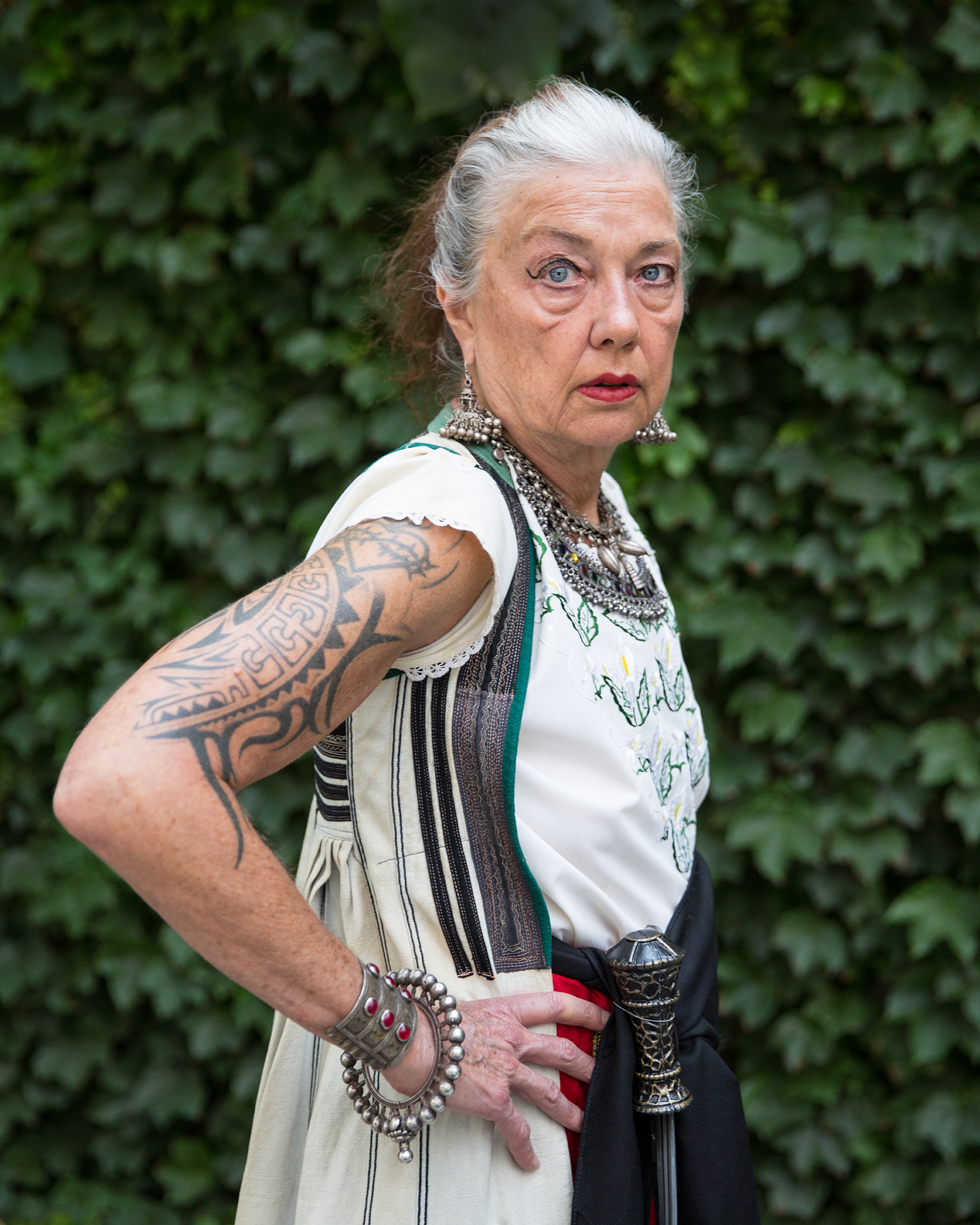
(1770-1825) Naval commander and heroine of the Greek War of Independence. Laskarina was the first female Navy admiral in history, her ship the Agamemnon, was the largest rebel warship in the Greek War of Independence from the Ottoman empire. Initially rejected by the Greek naval forces for being a woman, Bouboulina raised funds to finance the Agamemnon and fought independently on behalf of Greece. She was later decorated not by her own country but by Russia for helping win the Greek War of Independence.
She has remained a folk hero in Greece. Her name appeared famously in Kazantzakis’, Zorba the Greek as Zorba’s prostitute girlfriend, a former companion of a naval commander. The reference was apparent to Greek audiences who understood Bouboulinas heroic past and saw her character’s sexuality and defeat as a foreshadowing of the main character’s fate in the story. The real Bouboulina led a colorful and famous life in Greece and the literary character downplays the vast achievements of this historic Greek woman.
“I identify with Laskarina Bouboulina strength and tenacity.”-Carole Caroompas
Carole Caroompas, is a recipient of the Guggenheim Foundation and numerous other grants and awards. Caroompas is a professor of Art at Otis College of Art and Design. Her artwork fuses issues of gender and cultural conflict with highly charged pop-cultural imagery. Noted for both her painting and performance Caroompas was part of the Pacific Standard Time Shows, Under the Big Black Sun at the Museum of Contemporary Art, Los Angeles Goes Live: Performance Art in Southern California 1970 – 1983, L.A.C.E. and , L.A. RAW: Abject Expressionism in Los Angeles 1945 – 1980,Pasadena Museum of California Art. Her work was most recently seen in the show – LOVE SONG, Antwerp, Belgium and at Western Project in Los Angeles.
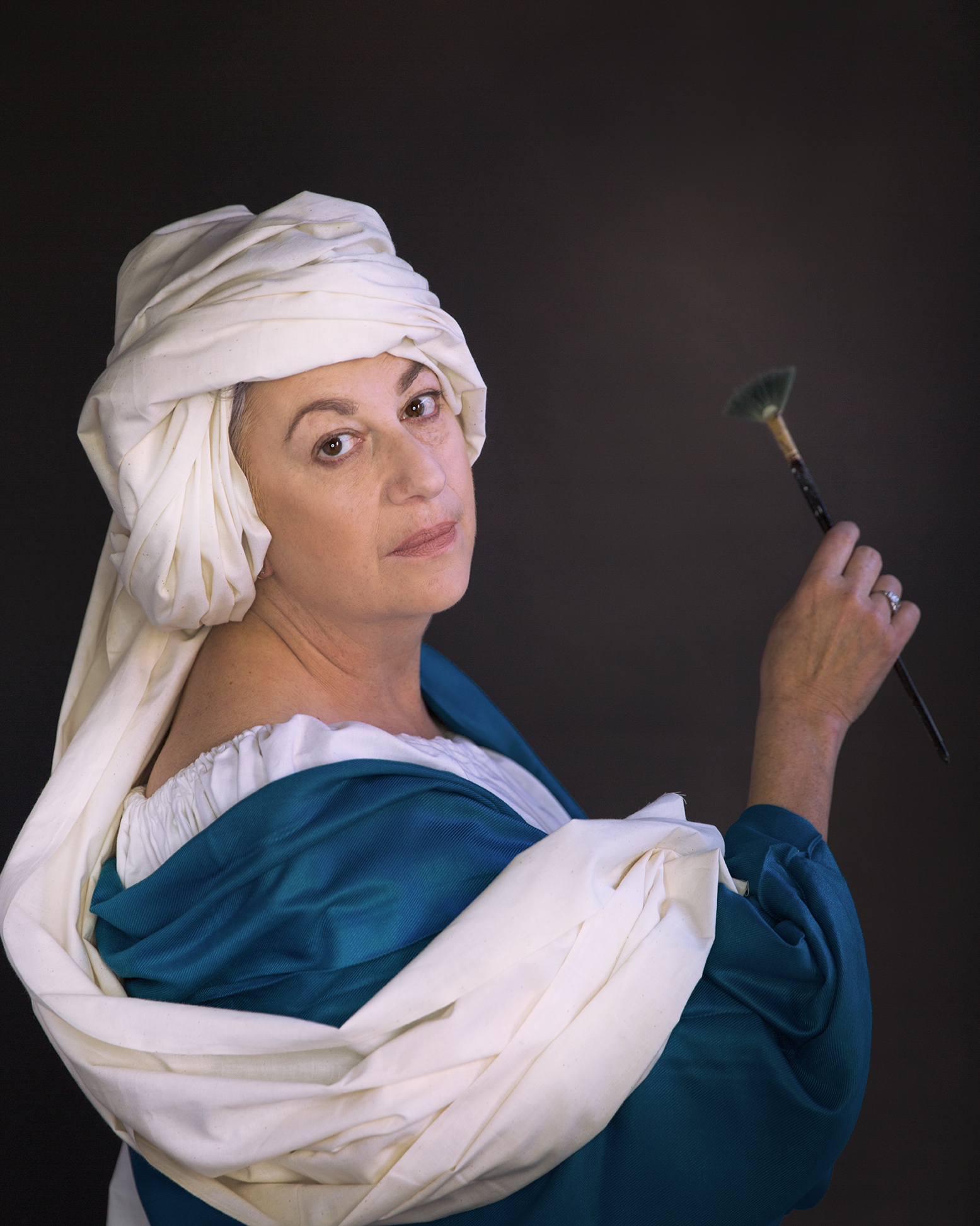
Gina Stepaniuk as Artemisia Gentileschi (1593-1656) Artemisia Gentileschi was an Italian Baroque painter and the daughter of painter Orazio Gentileschi. Among the noted followers of Caravaggio's lighting technique, Gentileschi expanded the genre by incorporating elements of psychological insight and feminine perspective into the depiction of allegories featuring strong female actors in painting. Artemisia was raped and testified against her rapist. Surviving court documents note that Gentileschi was subjected to a physical examination and thumbscrews during testimony. Although Gentileschi's rapist was convicted, he served no time for his crime and the story of her testimony has led feminists for generations to speculate on the psychological power of her images of women such as Susanna and the Elders, and Judith and Holofernes. Gentileschi's depiction vary greatly from her male peers in that they depict women full of emotion and depict their feeling through both figuration and facial expression, in addition to the dramatic lighting the Baroque school was famous for.
“I chose Artemisia Gentileschi because she was Italian, fearless, persistent and one of the best painters of her time. She was the first woman admitted to the Accademia del Disegno in Florence and became known and respected for large, dramatic paintings featuring female heroes from the old testament, history and mythology. “-Gina Stepaniuk
Gina Stepaniuk, is an artist living in Los Angeles. In 2009 Stepaniuk received the Joan Mitchell Foundation Grant in Painting. Her recent exhibitions include, New Views: Planet Earth, 2015 at LA Q3, Not Your Mother Landscape, 2013 at Launch Gallery, Los Angeles and Body of Water, EL Camino College Art Gallery.
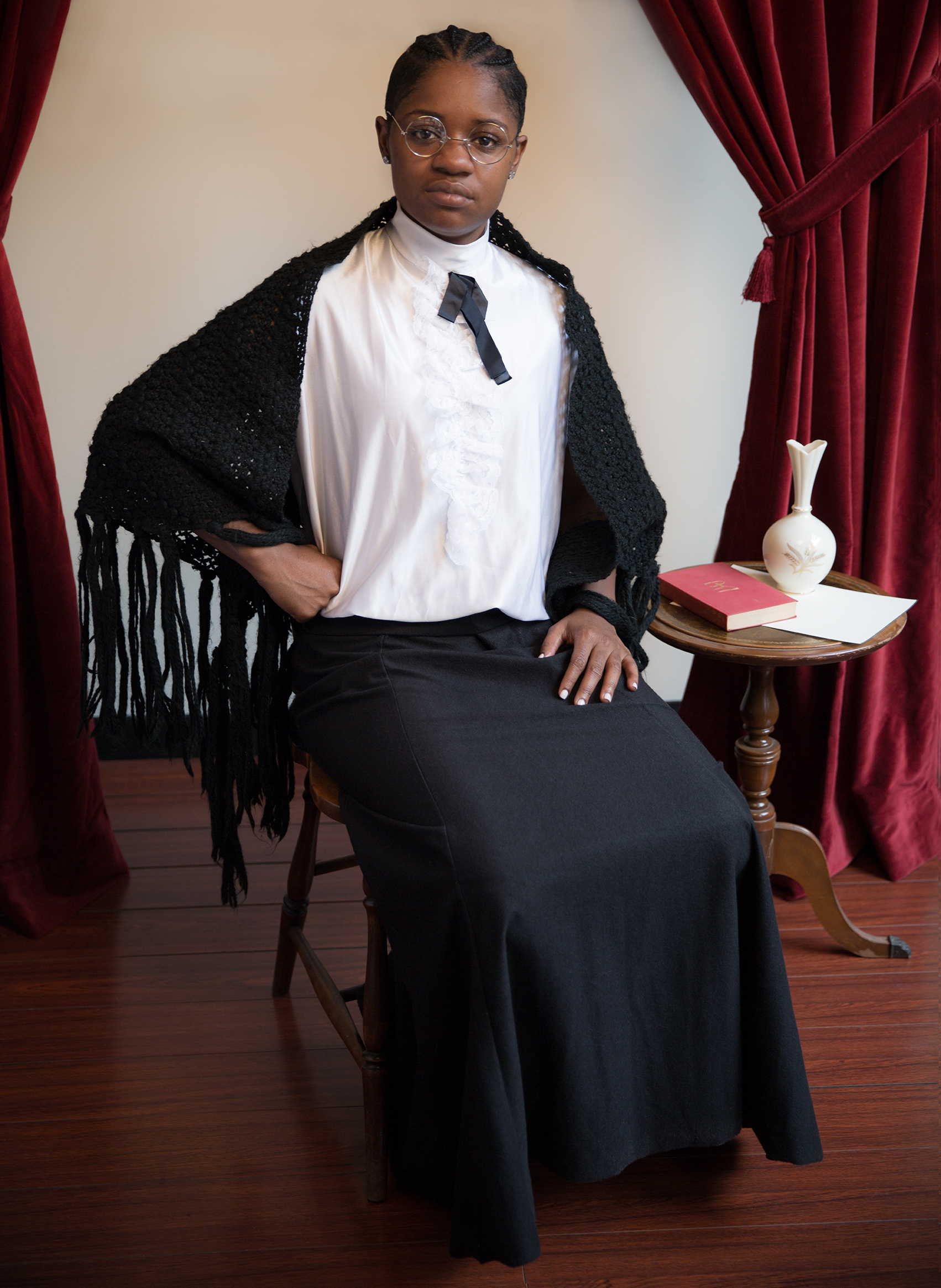
( 1797 – 1883) Born into slavery and escaped with her infant daughter. In 1838 she became the first black woman to sue and win a court case against a white man. She sued for custody of her infant son. She became an abolitionist and took the name Sojourner Truth after being called by God to testify through public speaking. Her most famous speech, “Ain’t I a Woman” was given at the 1851, at the Ohio Women's Rights Convention. Remarkably Truth gave her speech extemporaneously, essentially freestyling one of the most famous speeches of the Civil War era. Although Truth grew up in New York with Dutch owners, her speech was rewritten in a southern accent. The speech was used to recruit black soldiers to fight on the side of the Union army in the Civil War.Later the refrain, "Ain't I a Woman" was reconfigured by the civil rights movement to be, "Ain't I a Man" evoking the universal man but losing Truth's authorship.
Bre-Z like Sojourner Truth chose her name to signal a second life, one of a female MC. Bre-Z is a rapper whose androgynous style and fluid sexuality embody the fierceness of Sojourner Truth adding her own youth and talent. Most famous for her role of Frida Gatz on Empire, Bre-Z is also an accomplished barber and recording artist.
st famous sof the Civil War era. Although Truth grew up in New York with Dutch owners, her speech was rewritten in a southern accent. The speech was used to recruit black soldiers to fight on the side of the Union army in the Civil War.Later the refrain, "Ain't I a Woman" was reconfigured by the civil rights movement to be, "Ain't I a Man" evoking the universal man but losing Truth's authorship.
Bre-Z like Sojourner Truth chose her name to signal a second life, one of a female MC. Bre-Z is a rapper whose androgynous style and fluid sexuality embody the fierceness of Sojourner Truth adding her own youth and talent. Most famous for her role of Frida Gatz on Empire, Bre-Z is also an accomplished barber and recording artist.
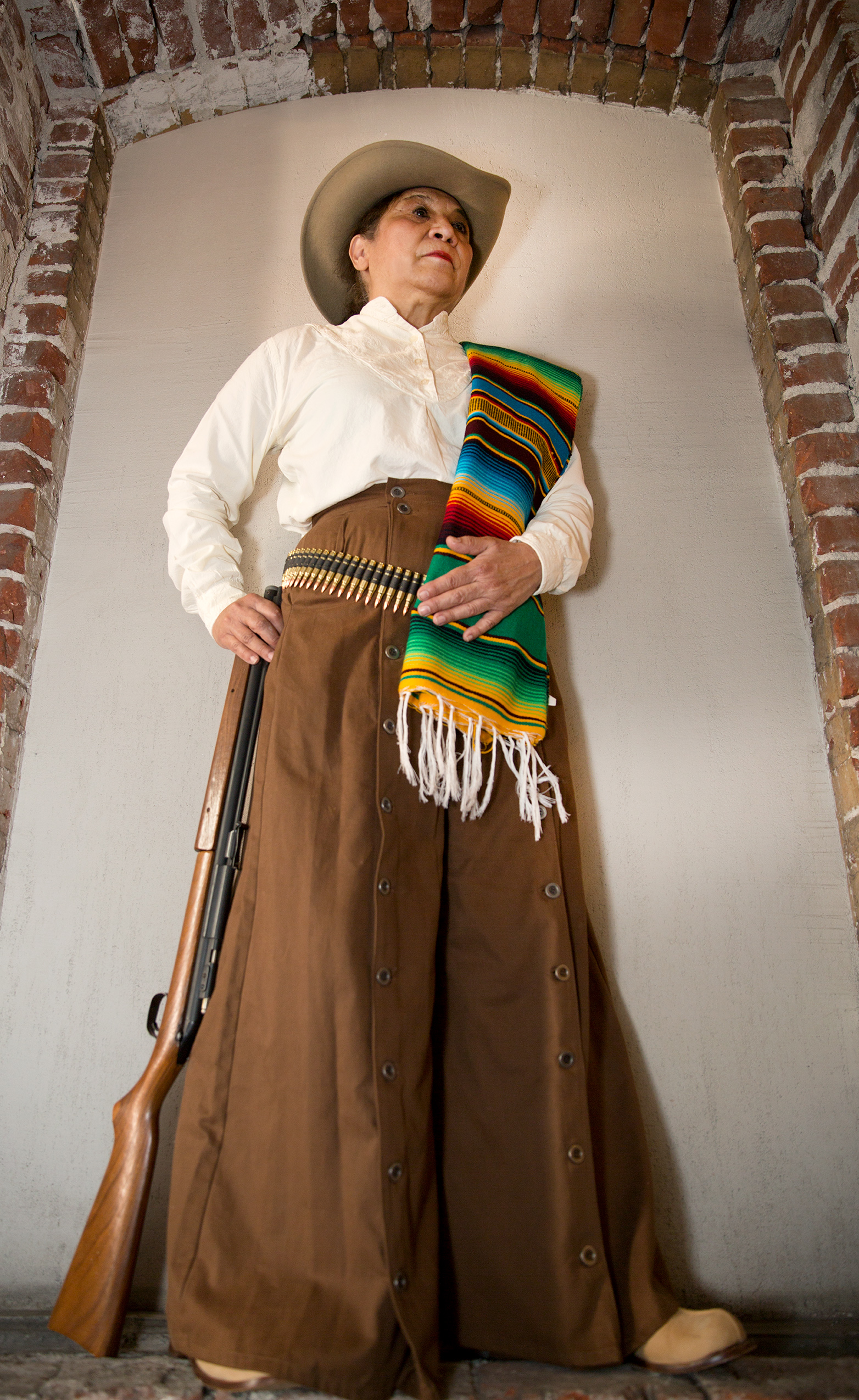
A Soldadera from the Mexican Revolution who fought and taught, challenging 20th century notions of femininity and class structures.
“Teacher and revolutionary. Fought in Mexican Revolution and taught the women, on the trail to the Mexican front, how to read and write. Literacy among women was only 5% at this time. Information about the war was not being reached to the poor because of the low literacy rate. Knowledge was power to her since she was a child who was taught by her aunt Abella (Isabella Martinez Arqualla) a teacher in Veracruz. Florencia became a teacher at the age of l8 and headed for the Revolution in l916. Her favorite author was Shakespeare especially Romeo and Juliet. She could quote long passages and would share them during the evening campfires.
She was married secretly to Joaquin Marcus La Planta (1898-1965). He also would quote Shakespeare to Florencia. The patterned their love affair after Romeo and Juliet, lovers since the age of 10 and 14. I choose her because she was a teacher and soldier. But also to show that people of different financial classes were part of the battle. Usually we think of the Mexican Revolution as a peasant revolution. Teachers are also revolutionaries, they can change the way something is seen and understood.” –Sandra Vista
Sandra Vista Sandra Vista is an artist, writer, curator and an educator, whose work focuses on painting issues and craft. Her intricate beading on vessels and paintings on canvas (hung like textiles), fuse fine art and decoration with elaborate swathes of color and texture. Her work has been featured at the Vincent Price Museum, Arena 1 gallery, Self-Help Graphics and the National Museum of Mexican Art.
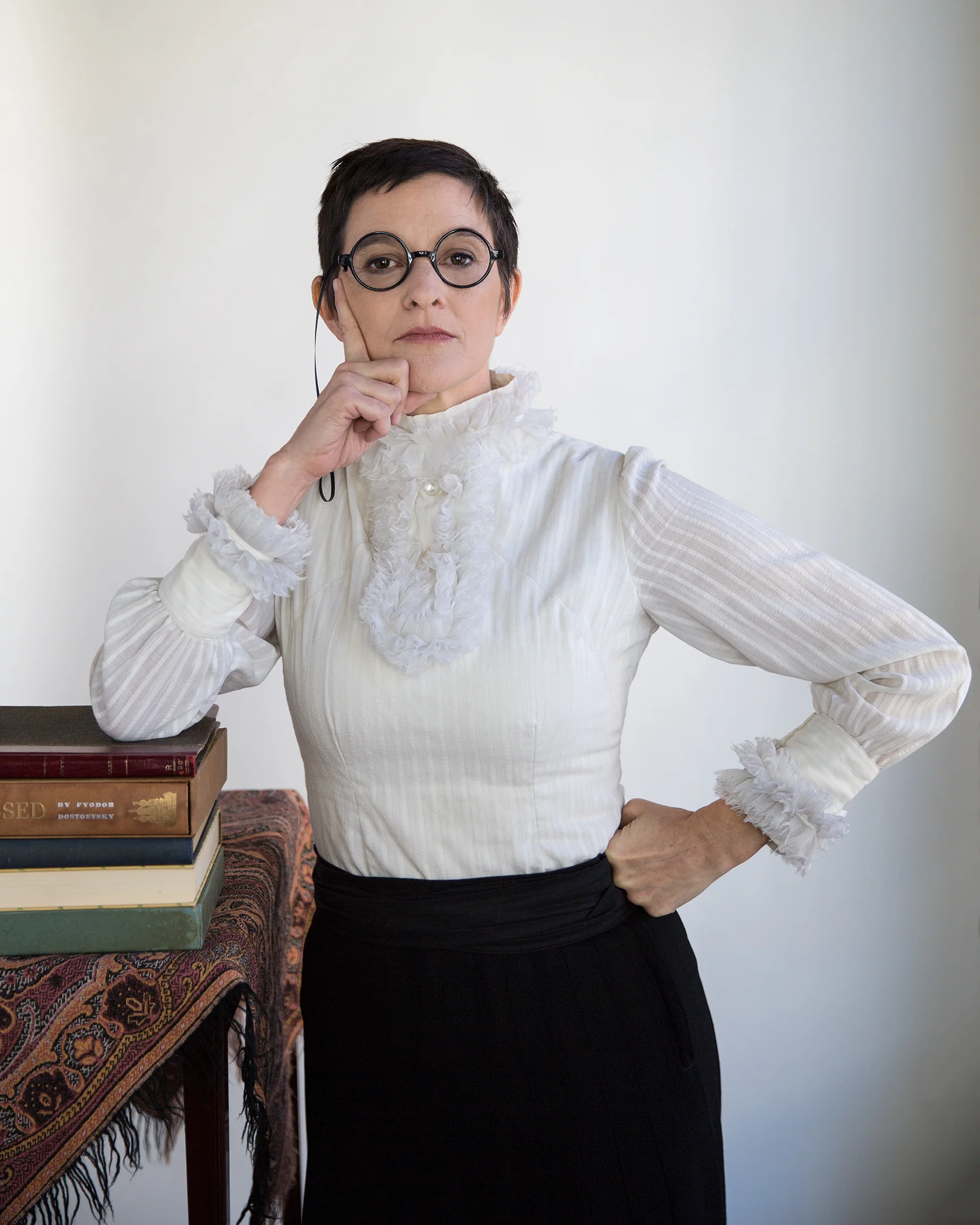
(1869-1940) Emma Goldman was a noted anarchist American exile and founder of the Mother Earth journal. Born in the Russian empire to Jewish parents, Goldman emigrated to the United States in 1885. She later served jail time for her role in persuading American immigrants not to register to the newly instated U.S.draft. Eventually Goldman was deported to Russia where she initially supported the Bolshevik revolution. Goldman eventually denounced the repression of oppositional voices with in Russian society in her book, My Disillusionment in Russia. Additionally, Goldman wrote an autobiography as well as speeches and essays supporting birth control, homosexuality, freedom of speech and free love.
“I picked Emma Goldman because she was passionate about social justice and inequality and unafraid to stand up for her beliefs. For Emma, anarchism was not about bombs and chaos, but a utopia of true equality and freedom.” -Annie Buckley
Annie Buckley is an artist, writer, curator, and educator with an emphasis on art and social justice. Her work embraces image, text, and social practice and has been included in public and gallery exhibitions since the early 90s. Her writing has been published widely since 2005 and she is a contributing editor to the Los Angeles Review of Books. Buckley is an associate professor of Visual Studies at California State University, San Bernardino and the founder and director of the Prison Arts Collective, for which she received a National Endowment for the Arts grant in 2016.
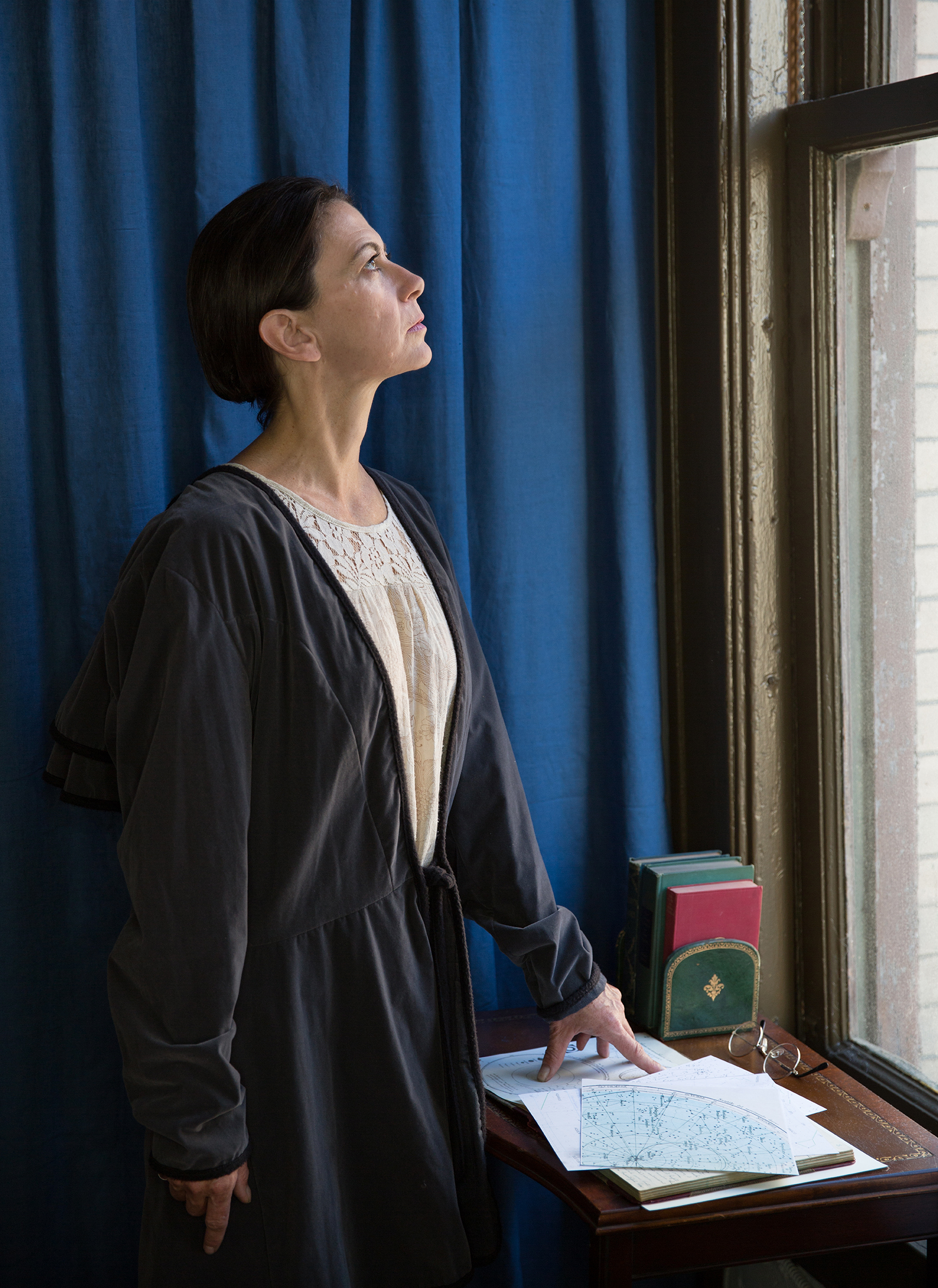
(1900-1979) British-American physicist. Payne-Gaposchkin left the U.K. in 1923 because she felt her job prospects were limited there and applied for and won a scholarship to study at the observatory at Harvard University. In 1925 she became the first person to earn a Ph.D. in astronomy from Radcliffe College (now part of Harvard). Cecilia’s research and doctoral thesis centered on her discovery that hydrogen was the most abundant element in the universe. When she presented her research to her review committee, Henry Norris Russell recommended she edit her assertion about the abundance of hydrogen. Four years later Russell published a paper asserting the same thing he persuaded Payne Gaposchkin to disavow. His paper attempted to take credit for her discovery about the abundance of hydrogen. Although Payne-Gaposchkin was briefly mentioned in Russell’s paper as the basis for his research, he is still often credited with the discovery.
Micol Hebron is an interdisciplinary artist whose practice includes studio work, curating, writing, social media, crowd-sourcing, teaching, public-speaking, and both individual and collaborative projects. She employs strategies of consciousness-raising, collaboration, generosity, play, and participation to support and further feminist dialogues in art and life. Hebron is an Associate Professor of Art at Chapman University; the founder/director of The Situation Room resource space for the creative community; the Gallery Tally Poster Project about gender equity in contemporary galleries; and the Digital Pasty/Gender Equity initiative for the internet. Most recently she has shown her project Gallery Talley at Los Angeles Contemporary Exhibitions in Los Angeles,at the New Mexico Museum of Art, Santa Fe, NM and the New Mexico Museum of Art, Santa Fe, NM. and numerous other institutions.
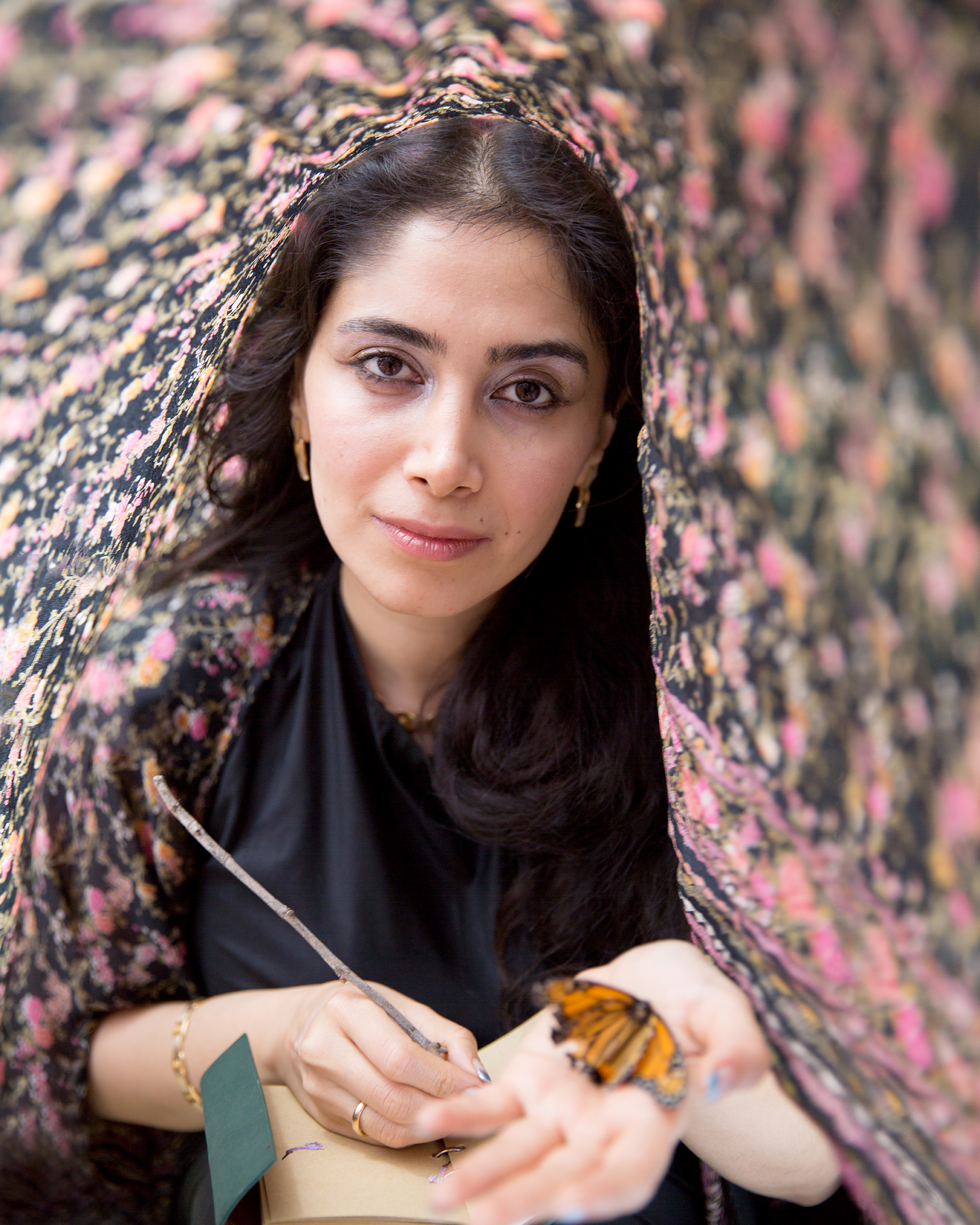
Marjan Vayghan as Parvin Etesami the popular Persian poet. Her first poems were published in 1921 when Parvin was 14 years old. Her work follows classical Persian style in form. Her chosen name Parvin roughly translates as “Butterfly”.
“My grandfather, introduced me to the works and creative practice of many writers, artists and activists. Parvin E'tesami, was the first to click in my heart and soul, as well as the first portrait I ever drew. She occupies a very special place in my heart, along with memories of my grandfather introducing me to the creative multiverse.”
- Marjan Vayghan
Marjan Vayghan is a conceptual artist, writer, curator and fashion designer born to Azerbaijani parents in Tehran, Iran. in 1984, Marjan Khoshbakhti Vayghan emigrated to the United States in the Spring of 1995, settling with her family in Los Angeles, California. Marjan continues to live alternately between Teheran and Los Angeles. Her practice is informed by this context of movement and flexible citizenship across both geographical and cultural spaces, and the multiple realities these spaces engender.
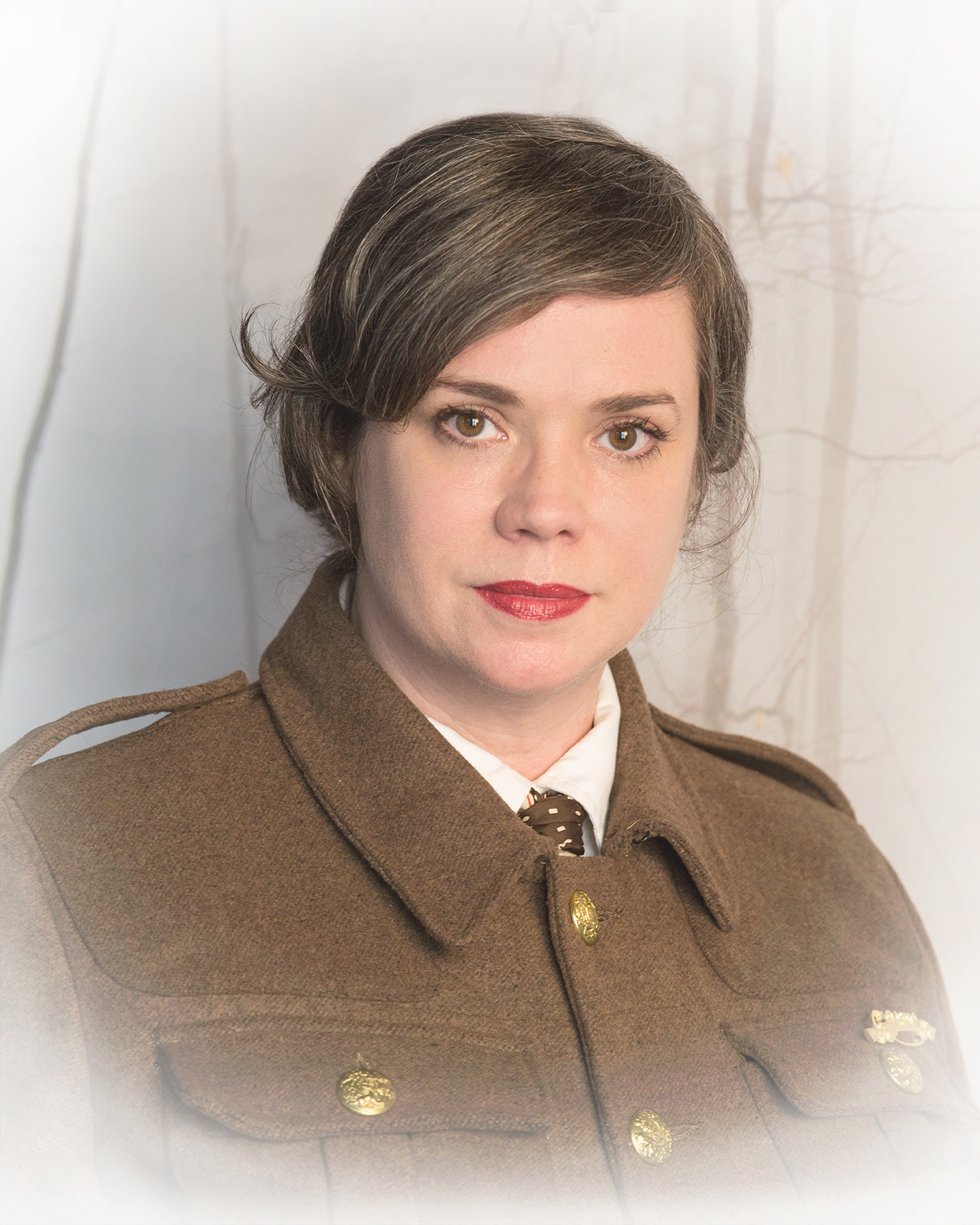
Allison Stewart as Margaret Skinnider (1893-1971), member of the Cumann na mBan organization of women who fought for Irish Independence during the Easter Uprising in 1916. The women of Cumann na mBan saw the uprising as an opportunity to fight for equal rights for Irish women, who at that time did not have the right to vote. Skinnider was a school teacher who became a sniper and bombmaker for the cause. During the uprising she was shot three times before she was arrested. She returned to teaching but remained a revolutionary, active in the 1920 War of Independence and the Civil War that followed, when she became Paymaster General of the Provisional Irish Republican Army. Documentary photographs taken of the Easter Uprising were airbrushed to erase the women of Cumann na mBan and their participation was excluded from history books.
“The women of Cumann na mBan are an example of the Cincinnatus tradition of the citizen whose devotion to their country and cause make them soldiers and politicians when they are needed and citizens when they are not. When I was a young woman arguing for equal rights it would always come down to the question of whether women could be soldiers. If I had known about the rich history of female warriors I would have won a lot more of those debates.”
-Allison Stewart
Allison Stewart, is an artist living in Los Angeles. She has most recently shown at the Houston Center for Photography and Station Independent Projects in New York City. In 2017 her work will be shown at the Center for Fine Art Photography and her project Resurrecting Matilda with collaborator Mary Anna Pomonis will be at the Brand Library in Glendale, CA. Her work is included in the Rubell Family Collection, the New Mexico History Museum Palace of the Governors Photo Archive, and numerous private collections.
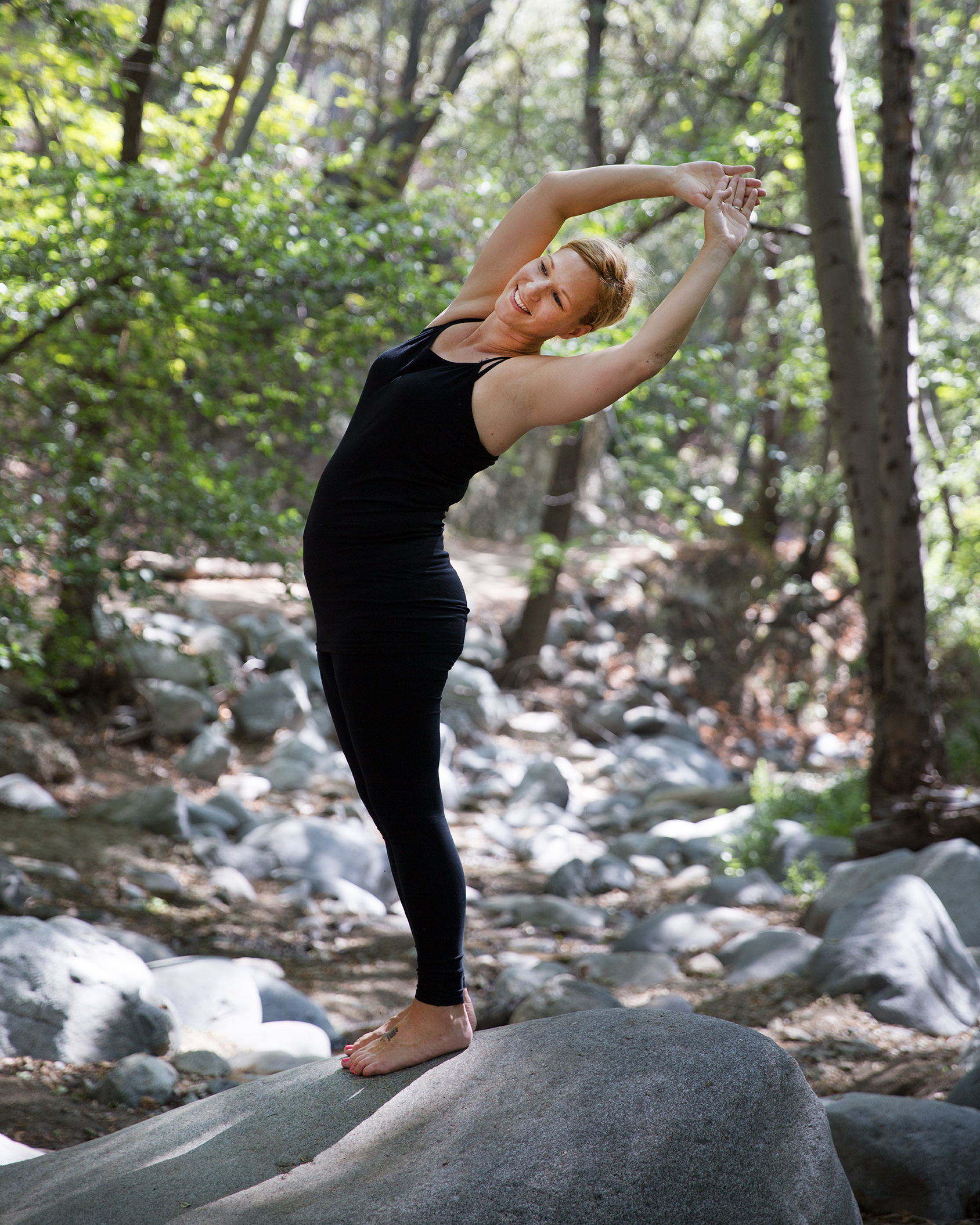
Designer of the women’s one piece bathing suit. Annette Kellerman was born with rickets and used swimming as a form of therapy to rebuild her body. In 1905 she was asked to perform as an exhibition swimmer and in order to perform and avoid an indecency charge she sewed a pair of stockings to a men’s one piece athletic swimsuit. Her innovation made headlines and as Kellerman’s career progressed her designs for suits and exhibition swimming progressed as well. Annette went on to become a vaudeville and early film superstar her largest film, Daughter of the Gods in 1916 cost over a million dollars in production and featured her in exhibition swimming semi-nude, her hair strategically hiding her body. Annette’s promotion of swimming and marketing her own line of swimsuits changed the way women thought of themselves in the water. She took on endurance swimming challenges such as attempting to cross the English Channel and with each attempt brought large crowds to see a woman endure. At one time Kellerman held the fastest time for the one mile, her early achievements have long inspired women in swimming including Esther Williams.
“There is much this modern day feminist admires in the courage, grace and tenacity of the "Australian mermaid," Annette Kellerman.”-Jess Perry-Martin
Jess Perry-Martin is an educator and artist. She has devoted her career to arts education and advocacy with the youth of Los Angeles. As an artist, she primarily paints and photographs the banal stories of people in their everyday lives. She has most recently shown her work at the CSUN art gallery.
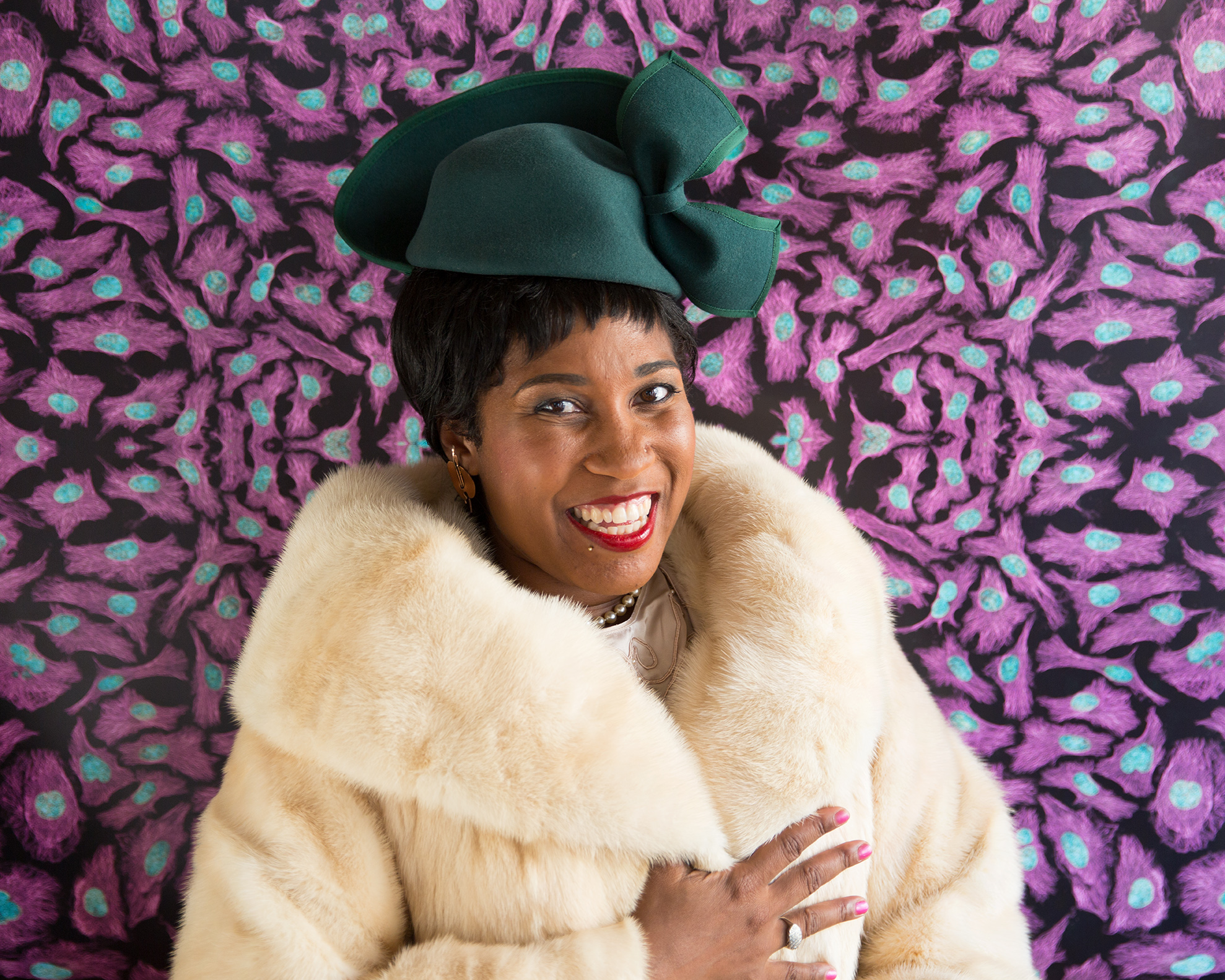
Zeal Harris, as Henrietta Lacks the mother of groundbreaking Hela cells, used in scientific research.
“When asked to dress-up for a portrait as a woman who had not been given her due respect in History, I choose to represent Henrietta Lacks because I found her story fascinating. In 1950, Henrietta went to the hospital/research center nearest her home that would take-in black patients. During her visit, she reported pain and bleeding from private parts and sample cells were taken from her vagina. A doctor at the hospital inspected the cells and become astonished at the rate the cells proliferated. That evening he went on television to say that the world’s first immortal cells had been discovered and that these cells would be a key to revolutionizing research and breakthroughs in the medical and scientific worlds and indeed, this is what happened. Henrietta died a few weeks later. Without her or her family’s knowledge, a multi-billion dollar industry sprag up to sell her cells around the world.
Henrietta’s story touches on key issues of my artistic practice – race, class, gender, sexuality of Black American women. This photo project to which I was invited to participate engages me in my mission to battle anonymity and expand the representation of black women through visual storytelling.
Most people do not know or do not believe that human ancestry is traced back to a female humanoid—a mitochondrial Eve that lived in East Africa. Two millions years ago, her descendants spread across the planet and proliferated becoming the human race as we know it today. Henrietta Lacks cells (Hela cells) have also proliferated aggressively, survive impossible conditions, and have been a key to bettering life for much of humanity by being the key to the invention of vaccines, cancer, and AIDS treatments for example. While Hela cells are used around the globe and taught in classrooms, few people know from where the cells originate.
On a more personal note, my 87 year-old grandmother adamantly chose to donate her body to science, but after her death, the hospital could not take her body saying that her blood was contaminated. Henrietta Lacks is a woman who unwittingly donated her body to science and I find the irony compelling. Black women are not stereotypically thought of as interested in or caring about science yet my grandmother chose to try and make her body to be useful to humanity and Henrietta’s family believes that if good things can happen because of Henrietta’s body, then this is a good thing.
My grandmother lived in Baltimore at the time that Henrietta did and could have walked the same streets as Henrietta. They could have shared a taxi or drinks at a bar or have been friends. Henrietta could have been my grandmother. I identify strongly with Henrietta and so do other women. Recently, a New York Times best selling biography was written about Henrietta, and Oprah Winfrey is planning to play the tragic hero in an upcoming bio-pic that she is producing.”- Zeal Harris
Zeal Harris is a Los Angeles based visual artist known for creating seductive, caricaturesque, political, urban-vernacular, story paintings. She occasionally teaches painting and leads workshops and has been in recent exhibitions at the Port Au Prince Haiti Ghetto Biennale, Mesa Contemporary Arts Museum, the California African-American Museum, 18th Street Arts Center, and the Caribbean Cultural Center of the African Diaspora in New York. Zeal has been mentioned in art reviews or interviewed on Pacifica Radio, Fabrik Magazine, The Culture Trip, Life in LA, Requited Journal, the Blk Grrrl Show, Clocktower Radyo Shak, the LA Weekly, and The Los Angeles Times. She will also be a featured artist in a soon to be published book on African-American artists in Los Angeles.
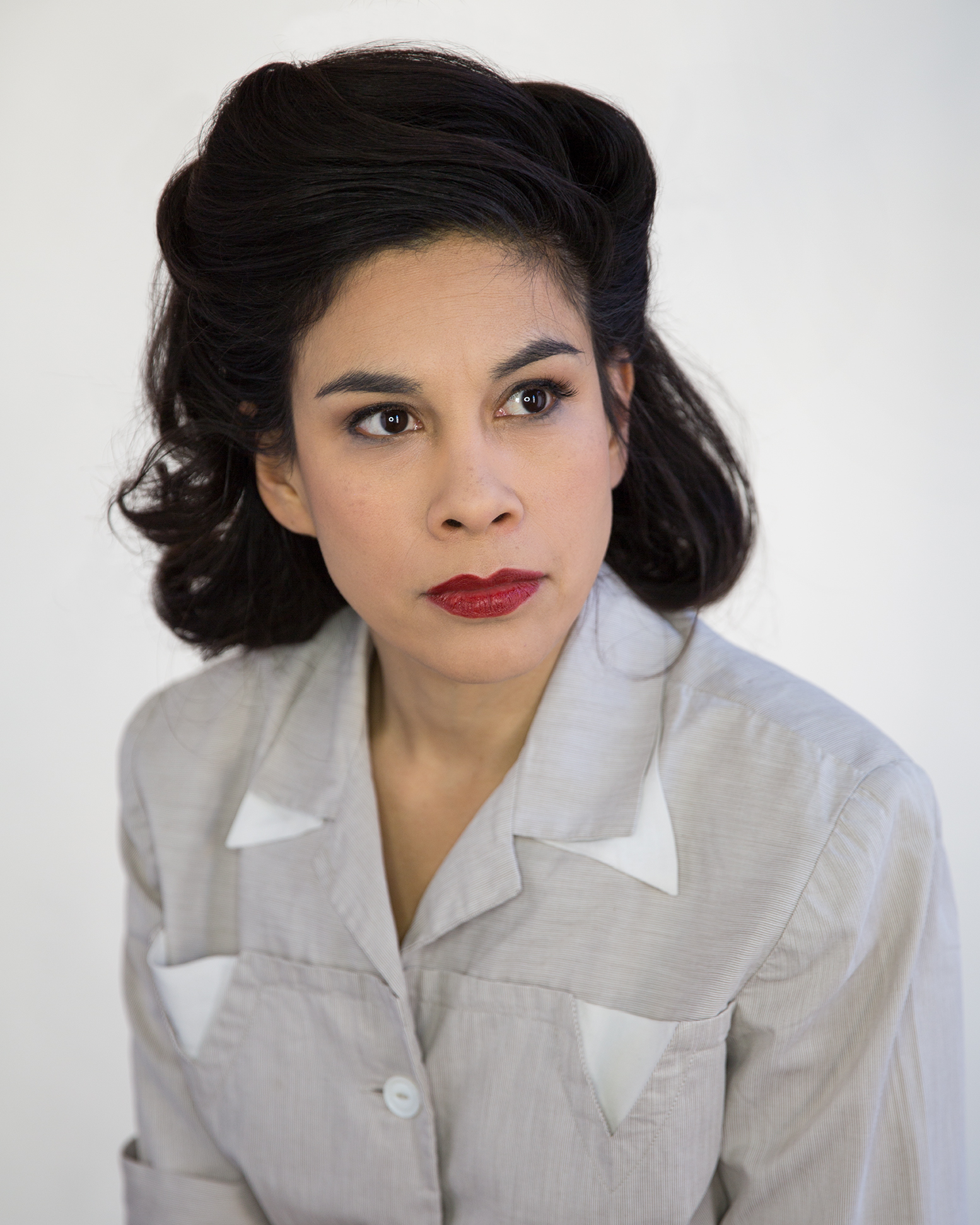
(1909-1944)
“After the 2016 U.S. election, I searched for a woman from Guatemala-my parents birth country- who would inspire me.
Near the end of World War II, Guatemalans had been ruled by a harsh dictator for over a decade. In the spring of 1944, a coalition of teachers, skilled workers and students decided to put an end to the dictatorship, fuelled by the dream of four freedoms: freedom of speech, freedom of religion, freedom from want, and freedom from fear.
As a first act of defiance, the teachers demanded higher wages and refused to march in an annual Teachers Day Parade scheduled for June 30, 1944.On June 29, several non violent protests gathered in the capital’s central square, the dictator responded with the cavalry and killed 200 persons. These people became martyrs, which sparked a broad general strike that paralyzed the country and forced Ubico to surrender power to his generals. “-Diana Sofia-Estrada
Diana Sofia‐Estrada is an artist and educator living in Los Angeles, CA. She has exhibited her work nationally and internationally. Estrada’s practice encompasses installation, video, drawing and painting, performance, and online media to question everyday expectations. She runs the online artist project www.ourprimeproperty.org Estrada teaches art and bicycles around Los Angeles.
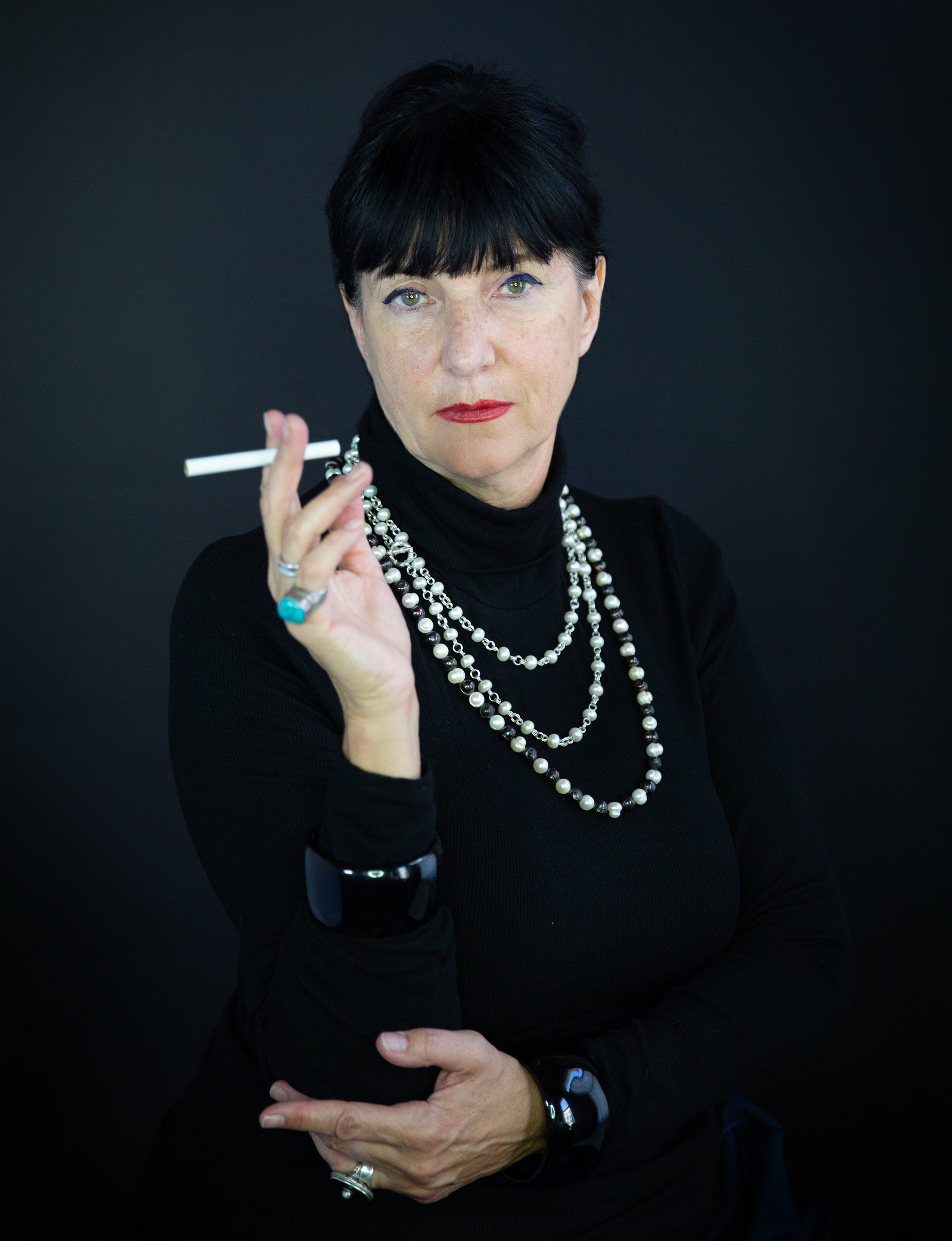
Lispector is perhaps the most well known female Brazilian novelist. Her work is highly autobiographical, written in a stream-of-consciousness style. She published her first novel at only 23 years old, and immediately rose to fame for her innovative style of writing. Born “Chaya” in the Western Ukraine after World War II, Lispector changed her name to “Clarice” and moved to Brazil in her teens. She married a Brazilian diplomat and traveled the world. Brian Mosher, the biographer of Lispector, has called her “the most important Jewish writer since Kafka,” and the popularity of her books, such as Agua Viva and The Passion According to G.H., stand as testaments to her continued popularity.
“I came across the work of Clarice Lispector many years ago--I believe in 1987 or ‘88--just when the University of Texas, or was it Minnesota, Press was first publishing some of her texts. I was at the Dutton’s Bookstore, now of course not in existence, but then a bastion of all great books within. House credit was offered to allow us to enter the world of amassing our own libraries… and a book of hers was stacked next to the cash register on the counter, where so many books were piled. I opened it and knew there was something that I had to access. I went over to the shelf to find out more and to see who see might be… and there were several books there. I chose The Passion according to G. H., a story of a woman and a cockroach and a confrontation. I have never been the same since. This book allowed me a kind of freedom to liberate myself--to come to understand myself as an other. I read this book again and again over the years. It has created a depth of vision for me that I did not possess before. Often I forget the book and then I read it as if it were just new and unknown. It allows me to encounter it with full relativity of emotion and intellectual stillness. It got me through the most painful moments of my life. To quote Lispector, ’I had reached nothingness, and the nothingness was live and moist.’
“Many years later, I began to read her biography, a book that I only can read in short bursts and which, to this day, I have not finished. I did not know how much we had together in our histories, how much the history of the world is both relfected in her and in her work. That is not completely true, as I always knew that the history of the world was reflected in her work. In the early 1990’s, I named a painting after this revelation: The Whole History of the World is Misunderstood.” - Renée Petropolous
Renée Petropolous
Renée Petropoulos has created and exhibited internationally, most recently embarking on the project, Among Nations (Mostly), with a performance, Analogue (2012), at The MAK Center; Venice to Venice (2012), as part of the Hammer Museum’s Made in L.A. exhibit; and Women in Surrealism, for LACMA (Los Angeles County Museum of Art). Black Star, begun in 2006, is a performance in continuum in Berlin. Her most recent installment of Prototype for the History of Painting: Eingrouping Social Historical was installed in MARTE San Salvador, El Salvador. Her recent film, Two or Three Things I Know About Gas Station Mini Marts screened at Screening, in Philadelphia. The outdoor public sculpture project, Bouquet(Flower Tower) Between Egypt, India, Iraq, the United States, Brazil, Ethiopia, and Mexico, situated in Santa Monica, California at a street and pedestrian intersection, was completed in spring, 2014. An exhibit of related subject, Bouquet(Flower Girl) Between Libya, the United States and Scotland, was installed at the Los Angeles Musuem of Art in May, 2014. Petropoulos’ monument drawings were also included in Forms of the Formless, at Beijing MoCA, curated by Marlena Donahue. From the United States to Mexico/ From Mexico to the Untied States, was presented at Commonwealth and Council, which included a choreographed performance.
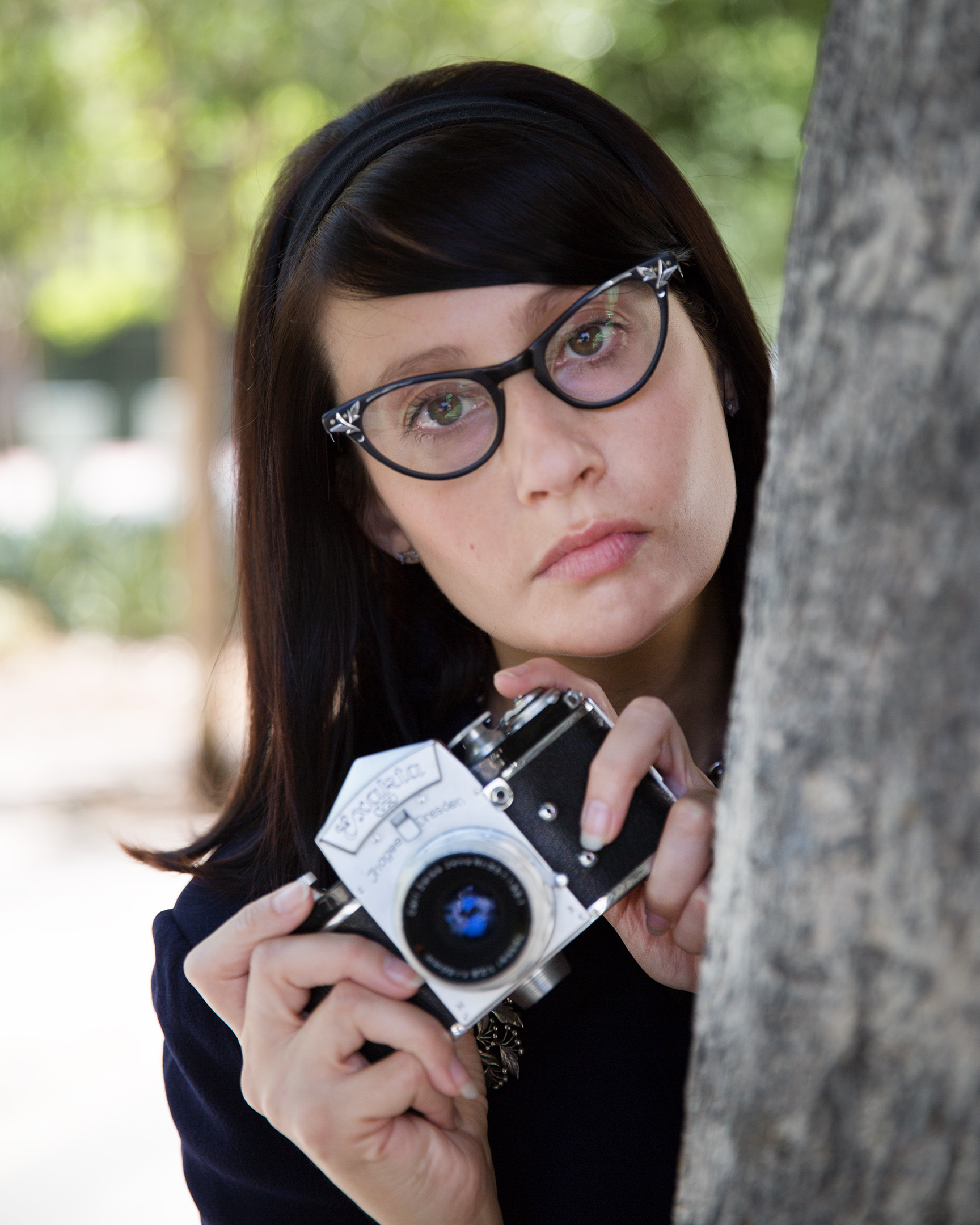
Author of the groundbreaking work of environmental science, Silent Spring. Published in 1962, Silent Spring explored the effects of pesticide on the environment and birds. The book directly led to legislation banning the use of DDT in the United States and the environmental protection movement Carson founded led to the current environmental protection agency. Initially sponsored by the Washington Audubon Society, Carson spent four years researching and writing Silent Spring. The editors of Discover magazine named Silent Spring one of the 25 best science books of all times.
Noelle McCleaf is a photographer exploring themes of memory, relationship, and identity on Florida’s Gulf Coast.
Her work has been shown in national and international exhibitions, and published in Blink Magazine, Fraction Magazine, Aint-Bad Magazine, Accent Magazine, and on Lenscratch, Feature Shoot, Southern Glossary, and Plates to Pixels. Some of her recent exhibitions include The Ones We Love at the Camden Image Gallery in London and The Ringling Underground at the Ringling Museum in Sarasota, Florida. She currently lives in Venice, Florida where she works as a professor of photography at the Ringling College of Art and Design.

(1944-) Political activist and professor. Davis’ activities in the 60s United States radical counter-culture movement, including her public speaking tours brought her close to groups like the Black Panthers and the National Women’s Political Caucus, fighting for equality. Her advocacy and positioning close to anti-american agencies helped her wind up on the FBI’s Most Wanted List in 1970. Davis spent 16 months in prison for participating in a jail break at Soledad prison, she was eventually acquitted. Her lengthy incarceration made her into a popular character among radicals, her image appearing on posters with the tagline, “Free Angela Davis.” Her first speech after her acquittal was at the Embassy Hotel in Los Angeles, in 1972. Davis has continued to fight and is co-founder of Critical Resistance, a group that fights to abolish the U.S. Prison Industrial Complex. Davis is a retired professor at the University of California, Santa Cruz in its History of Consciousness Department and a former director of the Feminist Studies program there. Her public speeches and call to action on issues of justice and education continue to inspire young activists throughout the world.
Lili Bernard is a Cuban-born, Los Angeles-based visual artist and actor. Her work examines issues of trauma born of sexism and racism, past and present. She has exhibited her work in a multitude of galleries and institutions, including Coagula Curatorial, Walter Maciel Gallery, Charlie James Gallery, Forest Lawn Museum, Torrance Art Museum, LA ArtCore, Barnesdall, ArtShare LA, Watts Towers Arts Center, Angels Gate Cultural Center, William Grant Still Arts Center, Avenue 50 Studio, For Your Art and Bolsky Gallery, among others.

Dr. Jennifer Earl as Dr. Kathryn F. Clarenbach. Clarenbach, along with Betty Freidan, helped found the National Organization for Women (NOW). Clarenbach was the first Chairperson of (NOW). Clarenbach helped organize legislation to address women’s issues such as, sexual assault, equal employment opportunity and divorce, both in her home state of Wisconsin and nationally in Washington D.C. Clarenbach helped organize the first and only National Women’s Conference in Houston Texas, in 1977, the International Year of the Woman. Throughout her scholarship Clarenbach insisted on the importance of women’s issues in the programs and conferences she organized often highlighting the difficulty women faced attending school because of issues as basic as child care and a lack of proper encouragement from their academic advisors.
“It was important to me to find a woman who also hailed from Wisconsin. I never thought I would find someone who I connected with at such a significant level and I am amazed that I was never taught about her. Kathryn was an early leader in the modern day feminist movement. She served as the original chairperson of the National Organization of Women. Thanks to "Kay's" commitment to education, she furthered continuing education for women. In 1963, she led the Governor's Commission on the Status of Women and she never stopped advocating on behalf of women. One of the things that originally motivated her was being banned from the Rathskeller at the Wisconsin Union due to the fact that women were not allowed. The Rathskeller was my favorite place to study at the University of Wisconsin. Thanks to Kathryn F. Clarenbach's dedication to the feminist movement, I enjoyed the Rathskeller and now I will forever enjoy a good pussybow.”
Dr. Jennifer Earl Foss is a native of Wisconsin and a proud UW-Wisconsin Badger. Her studies at the University of Wisconsin let her to the vocation of education and eventually to Arizona State University to focus on Educational Leadership and Policy Studies. Her doctoral program took her to both Mexico and England, where her pride and support of American public schools was solidified. Dr. Earl has been a high school social studies teacher and coach, academic counselor and Assistant Principal. Currently, she is serving as the Principal of Hoover High School, in Glendale, California.
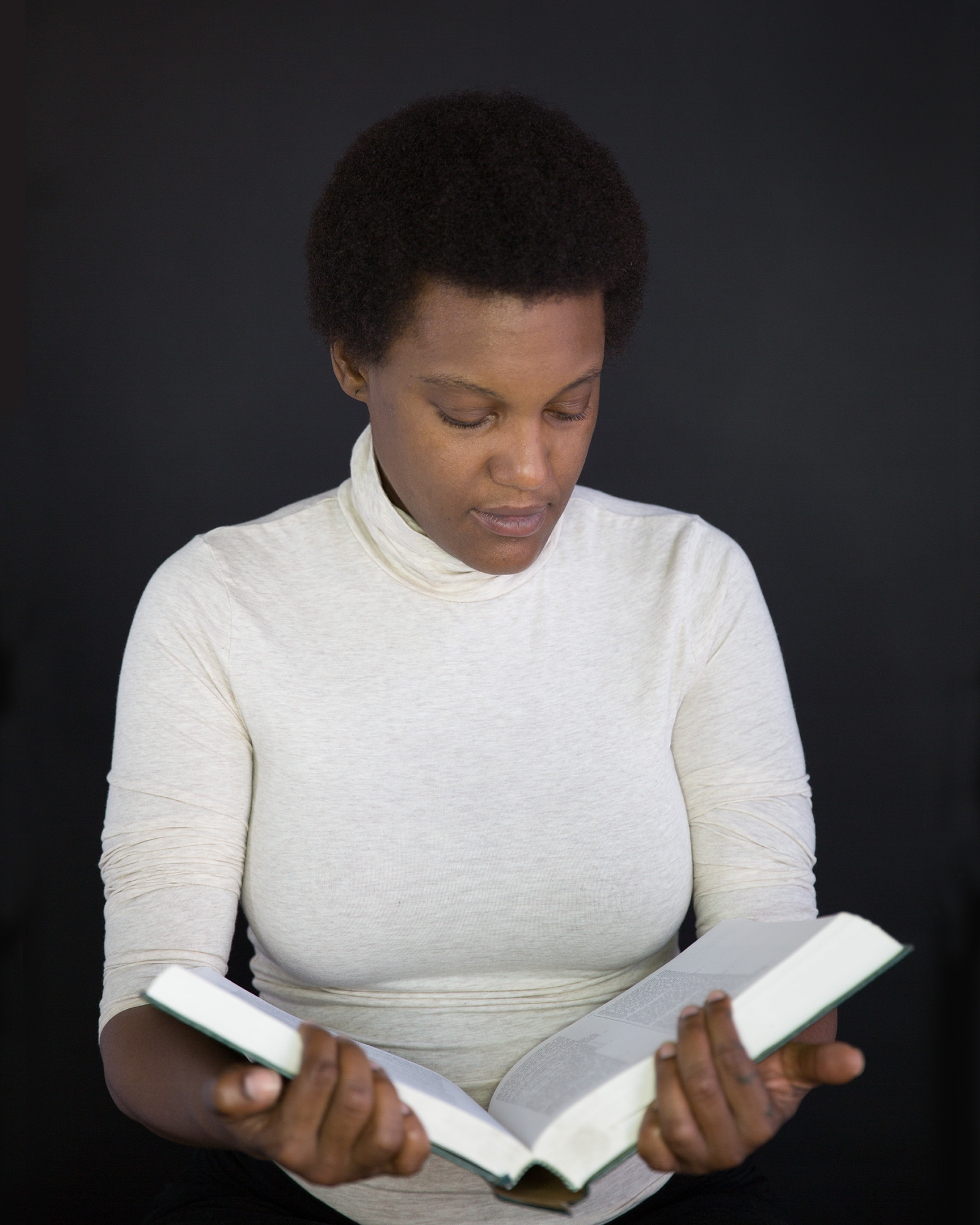
Octavia Butler was a ground-breaking writer, whose stories blended science fiction, black history, and spiritualism. She was the first science fiction writer to receive a MacArthur genius award as well as a Hugo and a Nebula award. Butler died young, at 58, in her hometown of Pasadena, California. Early on, she was encouraged by the author Harlan Ellison. She maintained a lifetime rigorous writing practice that took her readers to dystopian futures and the antebellum South. Her prescient Parable novels, written in the 1990’s, presented a violent and chaotic America and painted a picture of the rise of a conservative political candidate, Christopher Donner, who promises to “Make America Great Again.” Her novels create a sense that foreboding is the ground on which human ingenuity grows. Like Ursula K. Le Guin, Butler used science fiction as a pretext to talk about the social conditions of human beings, including race, class, and sex. Her work continues to be tremendously influential to artists and feminists, from Beyoncé to Kara Walker.
Jessica Wimbley | Bio
Lives and works in Claremont, CA
Wimbley received a BFA in Painting from Rhode Island School of Design, an MFA in Visual Arts from the University of California, Davis, and an MA in Arts Management from Claremont Graduate University. Wimbley has been included in exhibitions at CSULB’s Wignall Museum of Contemporary Art and Ripon College’s Caestecker Art Gallery, among other galleries and institutions across the United States.
Wimbley has been recognized for leadership in her work with academic museums and galleries, and has received a fellowship and Certificate in Leadership from the Association of Academic Museums and Galleries in partnership with Northwestern University’s Kellogg School of Management. Using her experience in arts management, Wimbley conceived, launched, and managed the Art After Hours program at the Pomona College Museum of Art. Wimbley also served as a board member for the nonprofit Museum Educators of Southern California, and as a panelist for the public art division of the Department of Cultural Affairs in Los Angeles. Wimbley was recently appointed to a three-year term on the City of Claremont's Public Art Committee.
Wimbley and curatorial collaborator, Chris Christion, developed the curatorial project series Biomythography, with exhibitions in academic, commercial, and nonprofit art spaces across Southern California, including California Lutheran University, Eastside International, and Claremont Graduate University.
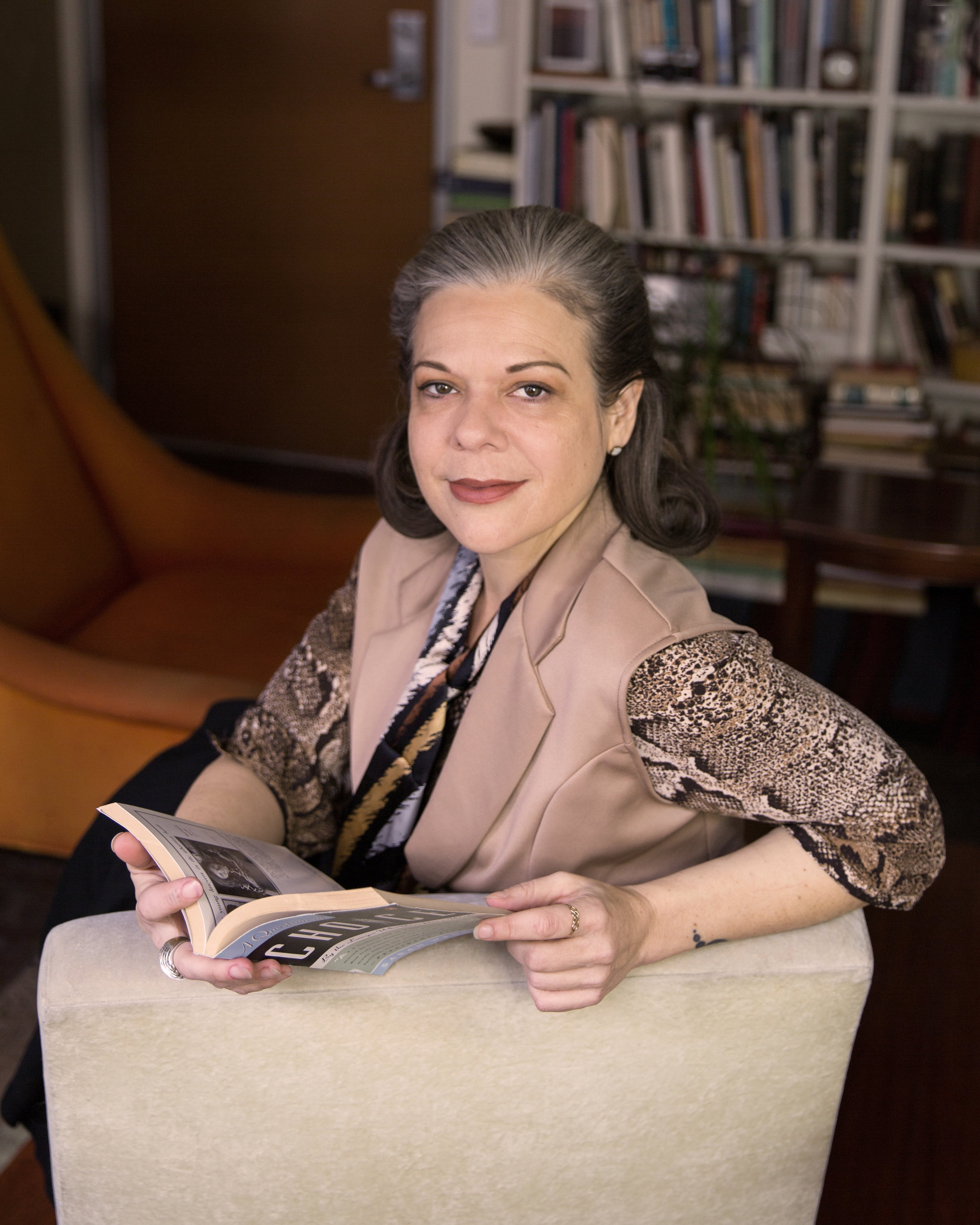
The idea to portray Sarah Weddington resonated with me on a few levels. Aside from her stature as an activist and a gifted lawyer, there was also the matter of a certain irony. Roe v. Wade was decided in 1973, when I was about two. So it was settled law for my entire lifetime, a guarantee on my civil rights which it never occurred to me could be jeopardized. And yet in the past few years, significant incursions and dangerous re-litigations in court and in society have menaced those rights, and other rights of women. Here we are, still and again, which is awful of course -- but it’s titans like Weddington that show us the way to fight and to win anew, as it seems we now must.
Shana Nys Dambrot is an art critic, curator, and author based in Downtown Los Angeles. She is currently LA Editor for Whitehot Magazine, and a contributor to KCET’s Artbound, as well as HuffPost, Creators (Vice), Fabrik, Art and Cake, Palm Springs Life, and Porter & Sail, and was formerly Contributing Editor to Art Ltd. She studied Art History at Vassar College, writes loads of essays for art books and exhibition catalogs, curates and/or juries a few exhibitions each year, is a dedicated instagram photographer and author of experimental short fiction, and speaks in public at galleries, schools, and cultural institutions nationally. She currently serves on the Board of Art Share-LA and the Advisory Council of Building Bridges Art Exchange.
For a pdf of the text click here